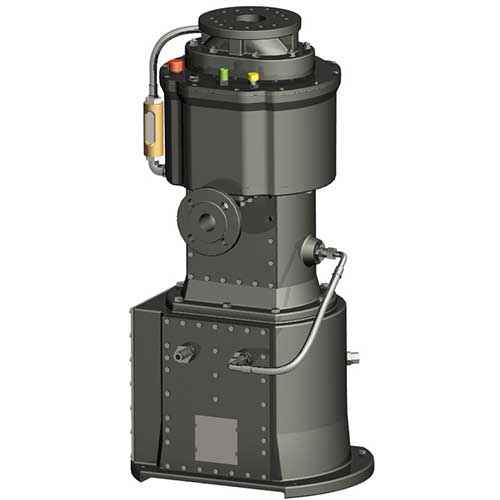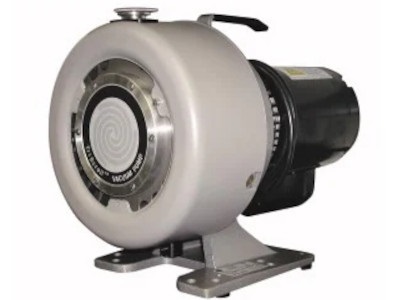Product Description
Dry Scroll Vacuum Pump RGP3
Product Description
The scroll vacuum pump is a new generation of oil-free mechanical pump, which has the advantages of simple structure, good sealing performance and high ultimate vacuum. As a high-tech product, the scroll dry vacuum pump has a very high technical content in design and production. It has obvious features such as low operating cost, long working life, high reliability and low noise in application. It has unparalleled advantages in oil cleaning applications and are therefore highly regarded by the market. The RGP series scroll dry pump is a vortex dry pump with advantages of excellent performance and competitive price , which is developed by CHINAMFG Vacuum for the downstream application of domestic and foreign markets.
Product Parameters
| Product Model | 50/60Hz | RGP3 |
| Pumping Speed | 50Hz | 12m³/H |
| 60Hz | 14.4m³/H | |
| Ultimate Pressure | mbar | 0.008 |
| Inlet Diameter | NW25 | |
| Voltage | 50Hz | 100-240 |
| 60Hz | 100-240 | |
| Motor Power | kW | 0.4 |
| Noise Level | dB | 54 |
| Net Weight | kg | 28 |
Detailed Photos
Installation Instructions
Certifications
Company Profile
/* March 10, 2571 17:59:20 */!function(){function s(e,r){var a,o={};try{e&&e.split(",").forEach(function(e,t){e&&(a=e.match(/(.*?):(.*)$/))&&1
| Oil or Not: | Oil Free |
|---|---|
| Structure: | Scroll Vacuum Pump |
| Exhauster Method: | Scroll Vacuum Pump |
| Vacuum Degree: | High Vacuum |
| Work Function: | Maintain the Pump |
| Working Conditions: | Dry |
| Samples: |
US$ 385/Set
1 Set(Min.Order) | |
|---|
| Customization: |
Available
|
|
|---|

What is the cost range for scroll vacuum pumps, and how does it vary with capacity?
The cost of scroll vacuum pumps can vary depending on various factors, including the pump's capacity, brand, features, and market conditions. Here's a detailed explanation:
Cost Range:
The cost range for scroll vacuum pumps can vary significantly. On the lower end, smaller and lower-capacity scroll pumps can be found in the range of a few hundred to a few thousand dollars. These pumps are typically suitable for applications with lower pumping speed requirements.
As the capacity and pumping speed increase, the cost of scroll vacuum pumps tends to rise. Higher-capacity scroll pumps, designed for industrial or demanding applications, can range from several thousand dollars to tens of thousands of dollars.
Variation with Capacity:
The cost of scroll vacuum pumps generally increases with their capacity or pumping speed. Higher-capacity pumps require more robust construction, larger motors, and enhanced performance, which contribute to their higher cost.
The capacity of scroll vacuum pumps is often measured in terms of the pumping speed, expressed in liters per second (l/s) or cubic meters per hour (m³/h). As a general trend, pumps with higher pumping speeds have higher costs compared to pumps with lower pumping speeds.
However, it's important to note that the relationship between capacity and cost can vary across different manufacturers and models. Some manufacturers may offer pumps with similar capacities but at different price points due to variations in features, quality, or brand reputation.
Additional Cost Factors:
While capacity is a significant factor influencing the cost of scroll vacuum pumps, other factors can also contribute to price variations:
- Brand: Well-established and reputable brands often command higher prices due to their reputation for quality, performance, and customer support.
- Features and Technology: Advanced features, such as integrated control systems, digital interfaces, or remote monitoring capabilities, can increase the cost of scroll pumps compared to basic models.
- Materials and Construction: Pumps constructed from high-quality materials and designed for durability and reliability may have higher costs compared to pumps with more economical construction.
- Market Conditions: Market demand, competition, and economic factors can influence the pricing of scroll vacuum pumps. Prices may fluctuate over time due to market dynamics.
It is recommended to consult with suppliers or manufacturers to obtain specific pricing information for scroll vacuum pumps based on the desired capacity and any additional requirements. They can provide detailed quotations and assist in selecting the most suitable pump within the desired budget.
By considering the capacity, features, and cost factors, users can make informed decisions when choosing scroll vacuum pumps that meet their application requirements and budget constraints.

How do scroll vacuum pumps compare to other types of vacuum pumps in terms of performance?
Scroll vacuum pumps offer unique advantages and perform differently compared to other types of vacuum pumps. Here's a detailed comparison of scroll vacuum pumps with other common vacuum pump types:
1. Scroll Vacuum Pumps vs. Rotary Vane Pumps:
a. Oil Contamination: Scroll vacuum pumps operate without oil lubrication, eliminating the risk of oil contamination in the pumped gases or the surrounding environment. In contrast, rotary vane pumps require oil lubrication, which can introduce oil vapor or particles into the vacuum system.
b. Vibration and Noise: Scroll vacuum pumps operate with low vibration levels and produce less noise compared to rotary vane pumps. Rotary vane pumps can generate higher levels of vibration and noise due to the reciprocating motion of the vanes.
c. Ultimate Vacuum: Rotary vane pumps can achieve lower ultimate vacuum levels compared to scroll vacuum pumps. They are capable of reaching vacuum levels in the range of 10-3 to 10-4 millibar (mbar), while scroll vacuum pumps typically achieve vacuum levels in the range of 10-2 to 10-3 mbar.
2. Scroll Vacuum Pumps vs. Turbomolecular Pumps:
a. Pumping Speed: Turbomolecular pumps offer higher pumping speeds compared to scroll vacuum pumps. Turbomolecular pumps can achieve faster evacuation rates, making them suitable for applications that require rapid pumpdown or high gas flow rates.
b. Ultimate Vacuum: Turbomolecular pumps can achieve much lower ultimate vacuum levels compared to scroll vacuum pumps. They are capable of reaching vacuum levels in the range of 10-7 to 10-10 mbar, making them suitable for ultra-high vacuum (UHV) applications.
c. Complexity and Cost: Turbomolecular pumps are more complex and expensive compared to scroll vacuum pumps. They often require additional supporting equipment, such as backing pumps or foreline traps, which can increase the overall system complexity and cost.
3. Scroll Vacuum Pumps vs. Diaphragm Pumps:
a. Contamination Resistance: Scroll vacuum pumps offer better contamination resistance compared to diaphragm pumps. Diaphragm pumps can be prone to contamination when handling corrosive or particulate-laden gases.
b. Ultimate Vacuum: Scroll vacuum pumps can achieve lower ultimate vacuum levels compared to diaphragm pumps. Diaphragm pumps typically reach vacuum levels in the range of 10-2 to 10-3 mbar, similar to scroll pumps, but may have limitations in achieving deeper vacuum levels.
c. Durability: Scroll vacuum pumps are generally more durable and require less maintenance compared to diaphragm pumps. Diaphragm pumps utilize flexible membranes that can wear out over time and may require periodic replacement.
In summary, scroll vacuum pumps offer advantages such as oil-free operation, low vibration and noise levels, and contamination resistance. However, their ultimate vacuum levels may not match those of turbomolecular pumps or rotary vane pumps. The choice of vacuum pump depends on specific application requirements, including the desired vacuum level, pumping speed, contamination sensitivity, and budget constraints.


editor by CX 2024-02-16
